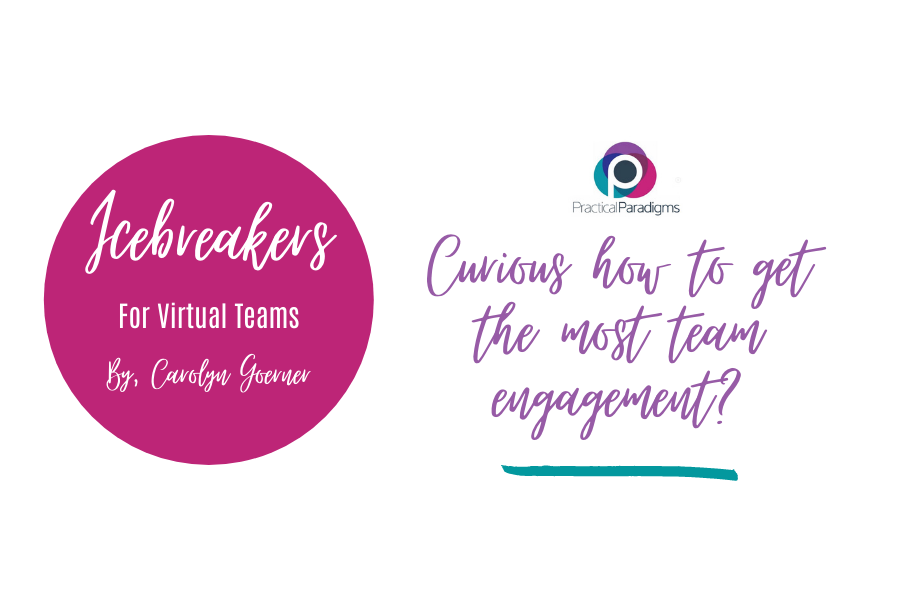Icebreakers for Virtual Teams
Curious how to get the most engagement?
When my colleague Dr. Daisy Lovelace and I created the LinkedIn Learning/Lynda.com course, Icebreakers for Teams, Meetings, and Groups in 2019, we focused on providing suggestions for face-to-face meetings. After all, we thought, that’s where the majority of meetings happen. Right?
How things have changed.
I’ve been teaching, coaching and training virtually since long before the pandemic began, but only recently have I realized how important icebreakers are for virtual meetings. Psychologically, having a time for self-disclosure and developing personal relationships is important to a successful gathering. When people participate in icebreakers, they develop a shared experience. Even when they’re short, those bonding moments help people feel connected to one another. They make people more comfortable sharing their opinions, and also help us listen better to one another.
Here’s a few suggestions for your next virtual meeting:
You can still "go around the room" and have each person answer a question to start the meeting. Tell them you’ll go in alphabetical order by first name, or ask participants to type "next" in Chat when they're ready to contribute and call on them in that order. Then everyone in the room knows who will speak when. Also ask them to take themselves off mute when they're up next - that makes the activity move a little faster.
Consider some of these questions:
What's the best advice you've ever received?
What cartoon character best represents you?
In 5 words or less, what's your favorite thing about your job?
Or use breakout rooms so participants work with one another and then report out. You can use some of the traditional questions ("What do all of you have in common?" for example) or try something new.
I discovered my favorite breakout room activity the day I learned the new term "maskne." (That's acne caused by wearing a mask.) I shared this with my class, then put them in breakout rooms to come up with another new word the English language needs during the pandemic. Their answers were terrific. My favorite? Mutemouth. That's when you're talking in a Zoom meeting…but you're on mute.
Don’t neglect Chat. Tell the group the Chat function is now their Twitter feed, and they should post a status update to describe their week.
Look into Kahoot or another program that allows people to respond to questions online or with their phones. You can use this for trivia challenges, or even to see if team members can identify one another from their baby pictures. Share pets, memorable moments, or high school photos.
Or appoint one person to be responsible for music as others are logging on. Tell them to pick a song that’s memorable to them and be ready to explain the song’s significance at the beginning of the meeting.
Many companies have found that making virtual meetings less formal than traditional face-to-face ones helps employees combat stress. So consider a policy welcoming interruptions from children or pets – or even make pet introductions a regular part of the meeting.
Icebreakers set the tone for a productive yet psychologically safe meeting. You can (and should!) use them regularly to keep your team communicating.

